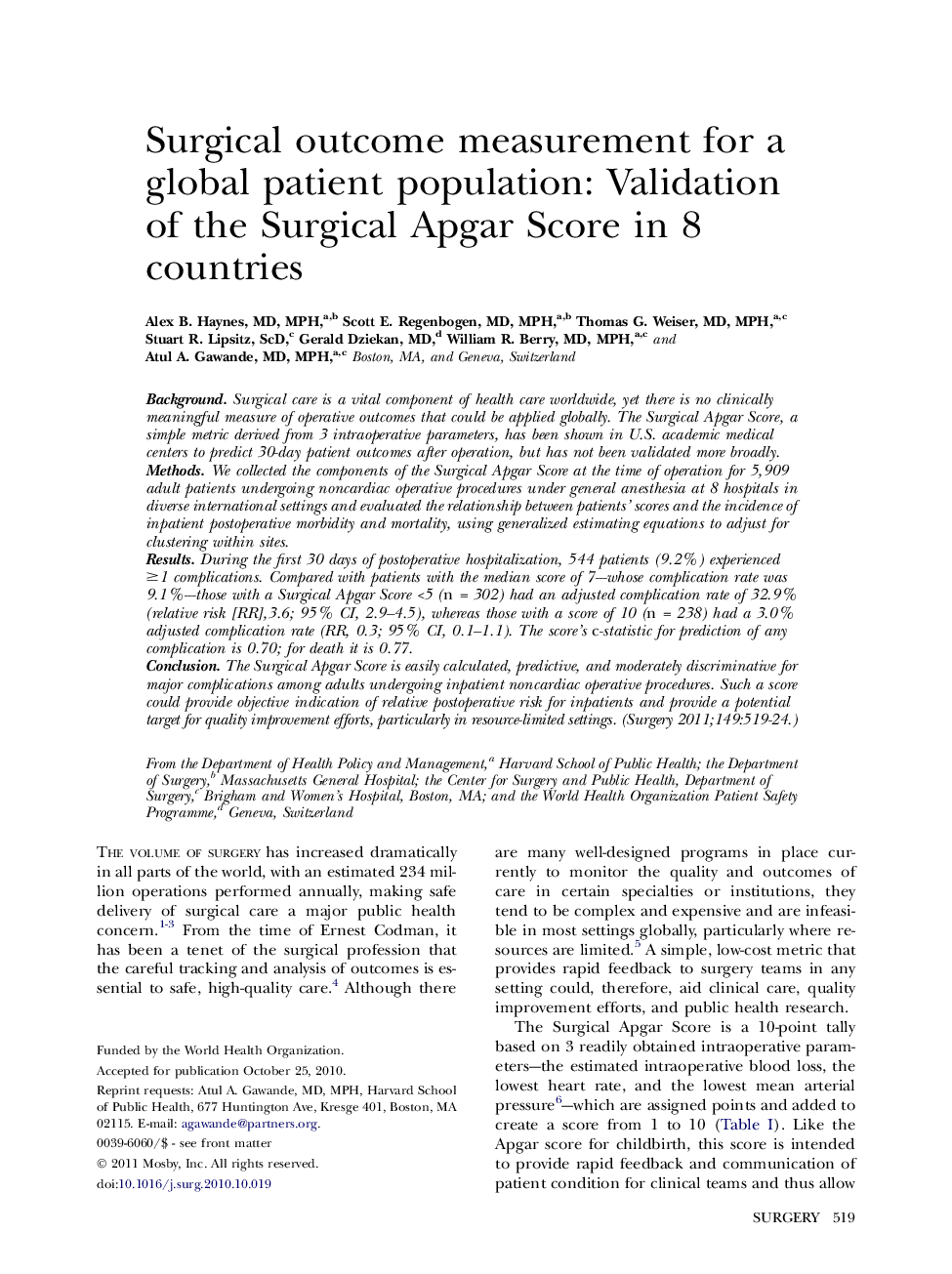| Article ID | Journal | Published Year | Pages | File Type |
|---|---|---|---|---|
| 4308887 | Surgery | 2011 | 6 Pages |
BackgroundSurgical care is a vital component of health care worldwide, yet there is no clinically meaningful measure of operative outcomes that could be applied globally. The Surgical Apgar Score, a simple metric derived from 3 intraoperative parameters, has been shown in U.S. academic medical centers to predict 30-day patient outcomes after operation, but has not been validated more broadly.MethodsWe collected the components of the Surgical Apgar Score at the time of operation for 5,909 adult patients undergoing noncardiac operative procedures under general anesthesia at 8 hospitals in diverse international settings and evaluated the relationship between patients’ scores and the incidence of inpatient postoperative morbidity and mortality, using generalized estimating equations to adjust for clustering within sites.ResultsDuring the first 30 days of postoperative hospitalization, 544 patients (9.2%) experienced ≥1 complications. Compared with patients with the median score of 7—whose complication rate was 9.1%—those with a Surgical Apgar Score <5 (n = 302) had an adjusted complication rate of 32.9% (relative risk [RR],3.6; 95% CI, 2.9–4.5), whereas those with a score of 10 (n = 238) had a 3.0% adjusted complication rate (RR, 0.3; 95% CI, 0.1–1.1). The score’s c-statistic for prediction of any complication is 0.70; for death it is 0.77.ConclusionThe Surgical Apgar Score is easily calculated, predictive, and moderately discriminative for major complications among adults undergoing inpatient noncardiac operative procedures. Such a score could provide objective indication of relative postoperative risk for inpatients and provide a potential target for quality improvement efforts, particularly in resource-limited settings.
